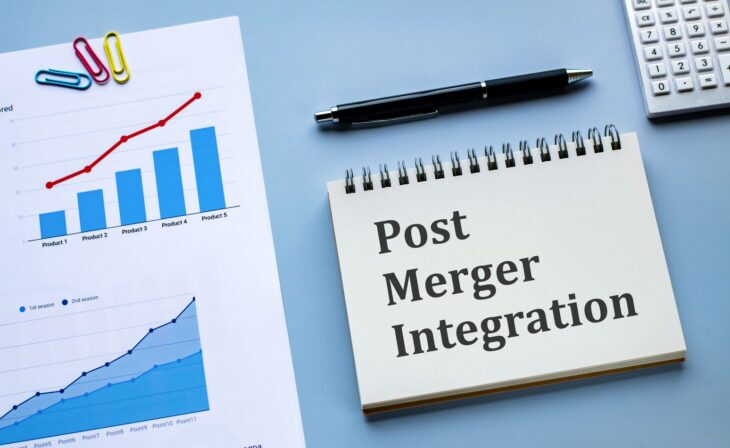Mergers and acquisitions cost more time, money, and worker hours than almost any other financial process – so why do companies do them?
Today, we’re not discussing the ‘how’ or the ‘what’ – we’re asking why do companies do M&A? What leads people to spend billions of dollars and many sleepless nights on them?
We’ll also use other terms – mergers, buy-outs, and transfers – that will all be clear…
Acquire Strategic Assets
Before we even think about profit, mergers and acquisitions aim at strategic advantage. Not all acquisitions have profit, immediately, but they all look to solve a problem or expand a market advantage for the buyer.
This could be a physical asset – like a patented piece of technology, an amazing fleet of vehicles and garages, or a whole new business in a different country. However, it could also be a way of securing intangible assets such as intellectual property, market share, or others.
Whatever the specific target, companies are paying for the potential upside in their long-term development, whether that’s product development, market development, or new market penetration. It’s this kind of “big” advantage that justifies the effort and capital companies put into acquisitions.
Examples include Facebook (now Meta) acquiring WhatsApp, as a way of acquiring a pre-existing IP and user base. This is a huge advantage for penetrating a new market, but there’s not a lot of profit, as WhatsApp wasn’t originally a monetized platform.
Increase Market Share/Financial Motive
In other instances, a buyer’s main motivation can be financial. It is plausible that a buy-out occurs because one company (often within a space) sees another company that is undervalued and may return an excellent profit when the whole company is purchased.
At the risk of oversimplification, the idea is just like stock buying, but you buy all of the stock. Equity purchases for a company with strong financial performance and a positive long-term outlook typically aims to use the resources of the buyer to accelerate the seller’s business model through increased capital availability.
This is often the case for many smaller sellers who want a ‘big player’ handling their business. It can be easy to step out when you feel like you’ve done everything you can, or when your next strategic goal (e.g. market share in a saturated market) requires a significant capital injection to fund competition with large, established, capital-superior brands.
Every company wants to improve their operational income, and cashflow like this can change their long-term fortunes, especially in publicly-traded companies.
Synergies
Synergies describe situations where two things work together beyond the sum of their parts. Where adding 1 and 1 produces 4, because the individual parts play together in a way that improves the total effectiveness and impact of the whole.
This is a type of strategic asset that comes from a highly specific interaction between buyer and seller. It’s typically the goal of both horizontal (across competition) and vertical (within a supply chain) purchases, where the buyer aims to change their internal process significantly on the basis of an acquisition.
Synergies are a specific set of strategic assets that are particularly impactful because they are well paired with a buyer’s interests and operations. This could be cross-selling, technical overlap, or simply shared expenses allowing economies of scale (especially in a merger).
For example, Starbucks purchased Teavana as a way to develop tea offerings alongside a dominant ‘fast’ coffee experience. It was able to offer better customer experience through the use of established brands with clear name-value to tea-enthusiasts, which is arguably both a branding and product-development “acceleration” beyond building a whole new Starbucks tea brand.
Economies of Scale
Economies of scale – the tendency for things to get more efficient as they get bigger and can get better deals on high-volume trading – is a major feature of mergers. Mergers often turn two mid-market companies into a single large company, which is able to more efficiently monitor business and compete with the biggest players of an industry.
Benefits of economies of scale include:
- Shared investment into supply chain integration
- Better cost-per-unit when buying in enormous bulk
- Higher total production output
- Cross-leveraging strong operational structures and employee expertise
- Tax incentives on merged operations
These all present great reasons to do bigger business, rather than doing business separately. This also applies to acquisitions, but the ability of one company to acquire another implies a difference in scale, in most cases (though this may not be the case in a large, leveraged buy-out). While ‘economies of scale’ is a typical pattern and not a cause-effect relationship, most companies benefit from pure size when negotiating with suppliers, manufacturers, and other parties, too!
Geographical Diversification
Building a presence in a new market can be an insurmountable task, even for the largest companies. It involves overcoming cultural differences, branding inertia, national skepticism, familiarity with a new labour and buyer market, and more.
For many large companies, the best option for ‘breaking new ground’ and expanding into new geographic, political, and cultural areas is to acquire a local brand. This is an easy way to leverage existing brand-familiarity and local trust, which may otherwise be difficult (or impossible) to attain.
To return to Warren Buffett’s example of Coca Cola, how long – and how much money – would it take for a foreign brand to overthrow Coca Cola’s US brand positioning and overtake it in-sector? Now imagine the same challenges applied in reverse, to US brands attempting to overtake local, culturally-entrenched favourites which have decades or centuries of customer goodwill.
In almost all cases where the product is this important, purchasing is cheaper and more effective than attempting to compete with a brand that has a “dug-in” position in the market. The market has shown this to be true, with cross-border deals climbing to over $2.1 trillion annually.
Vertical Integration
Vertical integration is a simple idea: you buy your providers of smaller components, services, or associated essentials to your operations. This allows you to take a significant amount of manufacture in-house to produce parts at a lower margin (cutting out seller margins and delivery cost) and take greater control of the process.
This is particularly important in iterative products where the ability to adjust the designs at a high pace and implement them in the greater product is a huge benefit. These can have direct implications for the long-term development of a company, but they do involve complex financial projections – how do you value this convenience and control over the process?
Vertical integration is very closely related to specific business needs and strategic position – and tends to be a great choice for very large companies with established cashflow. This is because vertical integration acquisitions typically reduce cost – which is a major concern primarily for high revenue companies whose margins of expenditure are more valuable than a complete acquisition.
Samsung, for instance, is known for offering their phones at a lower cost than Apple, in part due to integration of LCD and AMOLED displays. In a similar vein, Coca Cola acquired their bottling companies before (ironically) re-floating them on the market as separate entities.
Tax Benefits
One of the less-strategic reasons for acquiring a business is accounting – especially in publicly-traded companies. For many investors and shareholders, reducing expenditure to avoid taxation represents a long-term NET win for a company – they’ve acquired assets and they’ve not lost cash to taxation.
The legal and institutional impact of this kind of acquisition is less clear, however. Investing costs are a major part of any cashflow summary, and it could burden the company with future losses if the accounting is not rigorous in the acquisition of a new company (e.g. regarding capitalization-depreciation and liabilities, in an equity buy-out).
Naturally, this isn’t the most celebrated reason for an acquisition, but it’s a win-win for most buyers, since paying less tax and owning more assets are KPIs for every business.
Types of Mergers & Acquisitions
The motivations behind a merger or acquisition typically inform how it is performed. When we look at the majority of M&A events, there are a few common patterns that can help inform how we evaluate and understand acquisitions.
Horizontal Mergers & Acquisitions
Horizontal M&A brings together businesses that offer similar products and services in the same industry.
This both reduces competition and improves economies of scale. This has great potential for synergies in the fields of operational structure, physical assets, and shared experience among employees. This may also have customer-facing benefits such as a greater variety of products and services, increasing market share and overall revenue.
Facebook acquired Instagram in 2012 for $1 billion, in one of the most famous horizontal acquisitions. This produced a broader consumer base and ‘tied together’ social media strands with strategic changes from the buyer company.
Vertical Mergers & Acquisitions
Vertical M&A refers to the kind of supply chain acquisitions that reduce the number of ‘hands’ on a process. It reduces the amount of externality in the business model, improves control over the supply chain itself, and improves stability of product-attribution for the acquired manufacturer/provider.
By reducing suppliers, distributors, and middle-men, a buying company can reduce costs and improve influence and iteration on essentials.
Market Extension Acquisitions
When two businesses that offer the same products and services in different markets come together it’s known as a market extension M&A. It expands the customer base of both businesses, simultaneously.
A perfect example of this comes from 2002, when the Royal Bank of Canada (RBC) wanted to expand into the United States. Instead of starting from scratch in an entirely different market, they instead used their subsidiary RBC Centura to acquire the American company Eagle Bancshares Inc.
This automatically expanded business by 90,000 accounts and over $1.1 billion in assets, expanding access to new markets while building operations. RBC is now an investor favourite with an international presence.
Product Extension Buy-Outs
Product extension M&A happens when both parties operate in the same industry – and are able to work together to produce a better, or more accessible, product. This increases the total customer base and – via expanded sales – profit.
A historic example of a product extension M&A is when Pepsi Co merged with Pizza Hut in 1977. It allowed Pepsi to reach a wider audience, because anyone who bought a pizza from the popular pizza restaurant could only purchase Pepsi drinks from them when they ordered their food.
Conglomerate Acquisitions
Conglomerate M&A refers to any acquisition of companies that are not related to the purchaser. This has been less common in the anglosphere recently but remains an essential part of (e.g.) Japanese market operations.
Companies like Mitsubishi and Hitachi acquire many smaller manufacturers and patent holders to produce a wide range of products. This is conglomeration: companies broadening the fields in which they operate to improve diversification, break into new fields, and expand without encountering market share limitations in a single industry.
Concentric M&A
A concentric M&A is the opposite of a conglomerate M&A. It is when a company within a field acquires another that fits within the existing scope of products or services offered.
When Coca Cola purchased Vitamin Water in 2007, it allowed the soft drink giant to develop greater range within their products, in line with consumer demand. This acquisition is popular among particularly large corporations with great cashflow, capital reserves, and market share.
This kind of concentric acquisition is also seen in mid-market companies (around 5-50million dollars value) in smaller niches. Concentric M&A events are typically built around the kind of strategic necessity or advantage mentioned at the start of this article.
Conclusion
Mergers and Acquisitions are some of the most lucrative movements in the market, making waves that extend throughout (and across) industries. They’re a chance for smaller parties to ‘swing up’, for buying parties to expand their strategy, and to help sellers capitalize on their past, and continued, hard work.
M&A events are hugely complex and for each benefit, there are dozens of challenges. That’s why Acquinox offers specialist consultancy to make the M&A process easy for small and mid-market businesses, whether buying or selling.
Get in touch if you’re ready to hand off the stress of mergers and acquisitions, and get the best deal for your strategic or financial needs.





